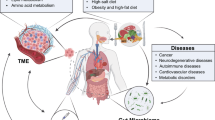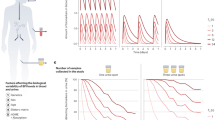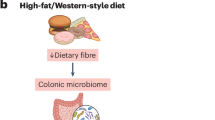Abstract
As cancer incidence is projected to increase for decades there is a need for effective preventive strategies. Fortunately, evidence continues to mount that altering dietary habits is an effective and cost-efficient approach for reducing cancer risk and for modifying the biological behavior of tumors. Predictive, validated and sensitive biomarkers, including those that reliably evaluate “intake” or exposure to a specific food or bioactive component, that assess one or more specific biological “effects” that are linked to cancer, and that effectively predict individual “susceptibility” as a function of nutrient-nutrient interactions and genetics, are fundamental to evaluating who will benefit most from dietary interventions. These biomarkers must be readily accessible, easily and reliably assayed, and predictive of a key process(es) involved in cancer. The response to a food is determined not only by the effective concentration of the bioactive food component(s) reaching the target tissue, but also by the amount of the target requiring modification. Thus, this threshold response to foods and their components will vary from individual to individual. The key to understanding a personalized response is a greater knowledge of nutrigenomics, proteomics and metabolomics.
Similar content being viewed by others
Log in or create a free account to read this content
Gain free access to this article, as well as selected content from this journal and more on nature.com
or
References
World Cancer Research Fund, American Institute for Cancer Research. Food, Nutrition and the Prevention of Cancer: a Global Perspective. Washington: American Institute for Cancer Research; 1997.
Milner JA . Molecular targets for bioactive food components. J Nutr 2004; 134: 2492s–8s.
Liu RH . Health benefits of fruit and vegetables are from additive and synergistic combinations of phytochemicals. Am J Clin Nutr 2003; 78: 517S–20S.
Davis CD . Nutritional interactions: credentialing of molecular targets for cancer prevention. Exp Biol Med 2007; 232: 176–83.
Coates PM, Milner JA . Bioactive components in foods and supplements for health promotion. In: Bowman BA, Russel RA, editors. Present knowledge in nutrition; 9th ed. Washington: ILSI; 2006. p 959–67.
Timbrell JA . Biomarkers in toxicology. Toxicology 1998; 129: 1–12.
Suk WA, Collman GW . Genes and the environment: their impact on children's health. Environ Health Perspect 1998; 106: 817–20.
Vainio H . Use of biomarkers — new frontiers in occupational toxicology and epidemiology. Toxicol Lett 1998; 102–103: 581–9.
Davis CD, Milner J . Frontiers in nutrigenomics, proteomics, metabolomics and cancer prevention. Mutat Res 2004; 551: 51–64.
Davis CD . Nutrigenomics and the prevention of colon cancer. Pharmacogenomics 2007; 8: 121–4.
Trujillo E, Davis CD, Milner J . Nutrigenomics, proteomics, metabolomics and the practice of dietetics. J Am Diet Assoc 2006; 106: 403–13.
Dodd KW, Guenther PM, Freedman LS, Subar AF, Kipnis V, Midthune D, et al. Statistical methods for estimating usual intake of nutrients and foods: a review of the theory. J Am Diet Assoc 2006; 106: 1640–50.
Olafsdottir AS, Thorsdottir I, Gunnarsdottir I, Thorgeirsdottir H, Steingrimsdottir L . Comparison of women's diet assessed by FFQs and 24-hour recalls with and without underreporters: associations with biomarkers. Ann Nutr Metab 2006; 50: 450–60.
Guthrie HA, Crocetti AF . Variability of nutrient intake over a 3-day period. J Am Diet Assoc 1985; 85: 325–7.
Michels KB, Bingham SA, Luben R, Welch AA, Day NE . The effect of correlated measurement error in multivariate modules of diet. Am J Epidemiol 2004; 160: 59–67.
Subar AF, Dodd KW, Guenther PM, Kipnis V, Midthune D, McDowell M, et al. The food propensity questionnaire: concept, development, and validation for use as a covariate in a model to estimate usual food intake. J Am Diet Assoc 2006; 106: 1556–63.
McKeown NM, Day NE, Welch AA, Runswick SA, Luben RN, Mulligan AA, et al. Use of biological markers to validate self-reported dietary intake in a random sample of the European Prospective Investigation into Cancer United Kingdom Norfolk cohort. Am J Clin Nutr 2001; 74: 188–96.
Finley JW . Selenium accumulation in plant foods. Nutr Rev 2005; 63 ( 6 Pt 1): 196–202.
Kushad MM, Brown AF, Kurilich AC, Juvik JA, Klein BP, Wallig MA, et al. Variation of glucosinolates in vegetable crops of Brassica oleracea. J Agr Food Chem 1999; 47: 1541–8.
de Vries JH, Hollman PC, Meyboom S, Buysman MN, Zock PL, van Staveren WA, et al. Plasma concentrations and urinary excretion of the antioxidant flavonols quercetin and kaempferol as biomarkers for dietary intake. Am J Clin Nutr 1998; 68: 60–5.
Stahl W, Sies H . Uptake of lycopene and its geometrical isomers is greater from heat-processed than from unprocessed tomato juice in humans. J Nutr 1992; 122: 2161–6.
Song K, Milner JA . Heating garlic inhibits its ability to suppress 7,12-dimethylbenz(a)anthracene-induced DNA adduct formation in rat mammary tissue. J Nutr 1999; 129: 657–61.
Fenech M . The Genome Health Clinic and Genome Health Nutrigenomics concepts: diagnosis and nutritional treatment of genome and epigenome damage on an individual basis. Mutagenesis 2005; 20: 255–69.
Nakamura Y, Tomokane I, Mori T, Tanaka A, Koutani J, Matsui T, et al. DNA repair effect of traditional sweet pepper Fushimi-togarashi: seen in suppression of UV-induced cyclobutane pyrimidine dimer in human fibroblast. Biosci Biotechnol Biochem 2000; 64: 2575–80.
Freese R . Markers of oxidative DNA damage in human interventions with fruits and berries. Nutr Cancer 2006; 54: 143–7.
Beetstra S, Thomas P, Salisbury C, Turner J, Fenech M . Folic acid deficiency increases chromosomal instability, chromosome 21 aneuploidy and sensitivity to radiation-induced micronuclei. Mutat Res 2005; 578: 317–26.
Friso S, Choi SW . Gene–nutrient interactions in one-carbon metabolism. Curr Drug Metab 2005; 6: 37–46.
Astley SB, Elliott RM, Archer DB, Southon S . Evidence that dietary supplementation with carotenoids and carotenoid-rich food modulates the DNA damage: repair balance in human lymphocytes. Br J Nutr 2004; 91: 63–72.
Hong YC, Lee KH, Kim WC, Choi SK, Woo ZH, Schin SK, et al. Polymorphisms of XRCC1 gene, alcohol consumption and colorectal cancer. Int J Cancer 2005; 116: 428–32.
Sancar A, Lindsey-Boltz LA, Unsal-Kacmaz K, Linn S . Molecular mechanisms of mammalian DNA repair and the DNA damage checkpoints. Annu Rev Biochem 2004; 73: 39–85.
Jacks T, Weinberg RA . Taking the study of cancer cell survival to a new dimension. Cell 2002; 111: 923–5.
Weinstein IB . Disorders in cell circuitry during multistage carcinogenesis: the role of homeostasis. Carcinogenesis 2000; 21: 857–64.
Agarwal R . Cell signaling and regulators of cell cycle as molecular targets for prostate cancer prevention by dietary agents. Biochem Pharmacol 2000; 60: 1051–9.
Visanji JM, Duthie SJ, Pirie L, Thompson DG, Padfield PJ . Dietary isothiocyanates inhibit Caco-2 cell proliferation and induce G2/M phase cell cycle arrest, DNA damage, and G2/M checkpoint activation. J Nutr 2004; 134: 3121–6.
Knowles LM, Milner JA . Diallyl disulfide inhibits p34(cdc2) kinase activity through changes in complex formation and phosphorylation. Carcinogenesis 2000; 21: 1129–34.
Martin KR . Targeting apoptosis with dietary bioactive agents. Exp Biol Med 2006; 231: 117–29.
Hu R, Kong AN . Activation of MAP kinases, apoptosis and nutrigenomics of gene expression elicited by dietary cancer-prevention compounds. Nutrition 2004; 20: 83–8.
Krammer PH . CD95's deadly mission in the immune system. Nature 2000; 407: 789–95.
Chen C, Kong AN . Dietary cancer-chemopreventive compounds: from signaling and gene expression to pharmacological effects. Trends Pharmacol Sci 2005; 26: 318–26.
Watson RW, Fitzpatrick JM . Targeting apoptosis in prostate cancer: focus on caspases and inhibitors of apoptosis proteins. BJU Int 2005; 96: 30–4.
Thornberry NA, Lazebnik Y . Caspases: enemies within. Science 1988; 281: 1312–6.
Caughey GE, Mantzioris E, Gibson RA, Cleland LG, James MJ . The effect on human tumor necrosis factor alpha and interleukin 1 beta production of diets enriched in n-3 fatty acids from vegetable oil or fish oil. Am J Clin Nutr 1996; 63: 116–22.
Shany S, Levy Y, Lahav-Cohen M . The effects of 1alpha,24(S)-dihydroxyvitamin D(2) analog on cancer cell proliferation and cytokine expression. Steroids 2001; 66: 319–25.
Chan MM . Inhibition of tumor necrosis factor by curcumin, a phytochemical. Biochem Pharmacol 1995; 49: 1551–6.
Xagorari A, Papapetropoulos A, Mauromatis A, Economou M, Fotsis T, Roussos C . Luteolin inhibits an endotoxin-stimulated phosphorylation cascade and proinflammatory cytokine production in macrophages. J Pharmacol Exp Ther 2001; 296: 181–7.
Davis JN, Kucuk O, Djuric Z, Sarkar FH . Soy isoflavone supplementation in healthy men prevents NF-kappaB activation by TNF-alpha in blood lymphocytes. Free Radic Biol Med 2001; 30: 1293–302.
Manna SK, Aggarwal BB . All-trans-retinoic acid upregulates TNF receptors and potentiates TNF-induced activation of nuclear factor-kappaB, activated protein-1 and apoptosis in human lung cancer cells. Oncogene 2000; 19: 2110–9.
Calder PC, Kew S . The immune system: a target for functional foods? Br J Nutr 2002; 88 ( Suppl 2): S165–77.
Fayette J, Soria JC, Armand JP . Use of angiogenesis inhibitors in tumour treatment. Eur J Cancer 2005; 41: 1109–16.
Presta M, Dell'Era P, Mitola S, Moroni E, Ronca R, Rusnati M . Fibroblast growth factor/fibroblast growth factor receptor system in angiogenesis. Cytokine Growth Factor Rev 2005; 16: 159–78.
Albini A, Tosetti F, Benelli R, Noonan DM . Tumor inflammatory angiogenesis and its chemoprevention. Cancer Res 2005; 65: 10637–41.
Pfeffer U, Ferrari N, Morini M, Benelli R, Noonan DM, Albini A . Antiangiogenic activity of chemopreventive drugs. Int J Biol Markers 2003; 18: 70–4.
Rose DP, Connolly JM . Regulation of tumor angiogenesis by dietary fatty acids and eicosanoids. Nutr Cancer 2000; 37: 119–27.
Bergman Jungestrom M, Thompson LU, Dabrosin C . Flaxseed and its lignans inhibit estradiol-induced growth, angiogenesis, and secretion of vascular endothelial growth factor in human breast xenografts in vivo. Clin Cancer Res 2007; 13: 1061–7.
Cao Y, Cao R, Brakenhielm E . Angioangiogenic mechanisms of diet-derived polyphenols. J Nutr Biochem 2002; 13: 380–90.
Dulak J . Nutraceuticals as anti-angiogenic agents: hope and reality. J Physiol Pharmacol 2005; 56: 51–69.
Oak MH, El Bedoui J, Schini-Kerth VB . Antioangiogenic properties of natural polyphenols from red wine and green tea. J Nutr Biochem 2005; 16: 1–8.
Barthomeuf C, Lamy S, Blanchette M, Boivin D, Gingras D, Beliveau R . Inhibition of sphingosine-1-phosphate- and vascular endothelial growth factor-induced endothelial cell chemot-axis by red grape skin polyphenols correlates with a decrease in early platelet-activating factor synthesis. Free Radic Biol Med 2006; 40: 581–90.
van Erk MJ, Blom WA, van Ommen B, Hendriks HF . High-protein and high-carbohydrate breakfasts differentially change the transcriptome of human blood cells. Am J Clin Nutr 2006; 84: 1233–41.
El-Bayoumy K, Sinha R . Molecular chemoprevention by selenium: A genomic approach. Mutat Res 2005; 591: 224–36.
Prima V, Tennant M, Gorbatyuk OS, Muzyczka N, Scarpace PJ, Zolotkhin S . Differential modulation of energy balance by leptin, ciliary neurotrophic factor, and leukemia inhibitory factor gene delivery: microarray deoxyribonucleic acid-chip analysis of gene expression. Endocrinology 2004; 145: 2035–45.
Zakharkin SO, Kim K, Mehta T, Chen L, Barnes S, Scheirer KE, et al. Sources of variation in Affymetrix microarray experiments. BMC Bioinformatics 2005; 6: 214.
van den Donk M, Buijsse B, van den Berg SW, Ocké MC, Harryvan JL, Nagengast FM, et al. Dietary intake of folate and riboflavin, MTHFR C677T genotype, and colorectal adenoma risk: a Dutch case-control study. Cancer Epidemiol Biomarkers Prev 2005; 14: 1562–6.
Ulrich CM, Curtin K, Potter JD, Bigler J, Caan B, Slattery ML . Polymorphisms in the reduced folate carrier, thymidylate synthase, or methionine synthase and risk of colon cancer. Cancer Epidemiol Biomarkers Prev 2005; 14: 2509–16.
Woodson K, Ratnasinghe D, Bhat NK, Stewart C, Tangrea JA, Hartman TJ, et al. Prevalence of disease-related DNA polymorphisms among participants in a large cancer prevention trial. Eur J Cancer Prev 1999; 8: 441–7.
Ratnasinghe D, Tangrea JA, Andersen MR, Barrett MJ, Virtamo J, Taylor PR, et al. Glutathione peroxidase codon 198 polymorphism variant increases lung cancer risk. Cancer Res 2000; 60: 6381–3.
Sutton A, Khoury H, Prip-Buus C, Cepanec C, Pessayre D, Degoul F . The Ala16Val genetic dimorphism modulates the import of human manganese superoxide dismutase into rat liver miotchondria. Pharmacogenetics 2003; 13: 145–57.
Ambrosone CB, Freudenheim JL, Thompson PA, Bowman E, Vena JE, Marshall JR, et al. Manganese superoxide dismutase (MnSOD) genetic polymorphisms, dietary antioxidants, and risk of breast cancer. Cancer Res 1999; 59: 602–6.
Woodson K, Tangrea JA, Lehman TA, Modali R, Taylor KM, Snyder K, et al. Manganese superoxide dismutase (MnSOD) polymorphism, alpha-tocopherol supplementation and prostate cancer risk in the alpha-tocopherol, beta-carotene cancer prevention study (Finland). Cancer Causes Control 2003; 14: 513–8.
Li H, Kantoff PW, Giovannucci E, Leitzmann MF, Gaziano JM, Stampfer MJ, et al. Manganese superoxide dismuatase polymorphism, prediagnostic antioxidant status, and risk of clinical significant prostate cancer. Cancer Res 2005; 65: 2498–504.
Ahn J, Nowell S, McCann SE, Yu J, Carter L, Lang N P, et al. Associations between catalase phenotype and genotype: modification by epidemiological factors. Cancer Epidemiol Biomarkers Prev 2006; 15: 1217–22.
Yeager M, Orr N, Hayes RB, Jacobs KB, Kraft P, Wacholder S, et al. Genome-wide association study of prostate cancer identifies a second risk locus at 8q24. Nat Genet 2007; 39: 645–9.
Ross SA . Diet and DNA methylation interactions in cancer prevention. Ann NY Acad Sci 2003; 983: 197–207.
Davis CD, Uthus EO . DNA methylation, cancer susceptibility and nutrient interactions. Exp Biol Med (Maywood) 2004; 229: 998–5.
Davis CD, Uthus EO . Dietary folate and selenium affect dimethylhydrazine-induced aberrant crypt formation, global DNA methylation and one-carbon metabolism in rats. J Nutr 2003; 133: 2907–14.
Fang MZ, Wang Y, Ai N, Hou Z, Sun Y, Lu H, et al. Tea polyphenol (-)-epigallocatechin-3-gallate inhibits DNA methyltransferase and reactivates methylation-silenced genes in cancer cell lines. Cancer Res 2003; 63: 7563–70.
Fang MZ, Chen D, Sun Y, Jin Z, Christman JK, Yang CS . Reversal of hypermethylation and reactivation of p16INK4a, RARbeta, and MGMT genes by genistein and other isoflavones from soy. Clin Cancer Res 2005; 11: 7033–41.
Cope MB, Steele VE, Eto I, Juliana MM, Grubbs CJ . Prevention of methylnitrosourea-induced mammary cancers by 9-cis-retinoic acid and/or vitamin D3. Oncol Rep 2002; 9: 533–7.
Velmurugan B, Mani A, Nagini S . Combination of S-allylcysteine and lycopene induces apoptosis by modulating Bcl-2, Bax, Bim and caspases during experimental gastric carcinogenesis. Eur J Cancer Prev 2005; 14: 387–93.
Swami S, Krishnan AV, Peehl DM, Feldman D . Genistein potentiates the growth inhibitory effects of 1,25-dihydroxyvitamin D3 in DU145 human prostate cancer cells: role of the direct inhibition of CYP24 enzyme activity. Mol Cell Endocrinol 2005; 241: 49–61.
Shen F, Weber G . Synergistic action of quercetin and genistein in human ovarian carcinoma cells. Oncol Res 1997; 9: 597–602.
Mertens-Talcott SU, Percival SS . Ellagic acid and quercetin interact synergistically with resveratrol in the induction of apoptosis and cause transient cell cycle arrest in human leukemia cells. Cancer Lett 2005; 21: 141–51.
Khafif A, Schantz SP, Chou TC, Edelstein D, Sacks PG . Qu antitation of chemopreventive synergism between (-)-epigallocatechin-3-gallate and curcumin in normal, premalignant and malignant human oral epithelial cells. Carcinogenesis 1998; 9: 419–24.
Mathers JC, Hesketh JE . The biological revolution: understanding the impact of SNPs on diet-cancer interrelationships. J Nutr 2007; 137: 253s–8s.
McCormack VA, dos Santos Silva I, Koupil I, Leon DA, Lithell HO . Birth characteristics and adult cancer incidence: Swedish cohort of over 11,000 men and women. Int J Cancer 2005; 115: 611–7.
Lamartiniere CA, Cotroneo MS, Fritz WA, Wang J, Mentro-Mercel R, Elgavish A . Genistein chemoprevention: timing and mechanisms of action in murine mammary and prostate. J Nutr 2002 132: 552s–8s.
Boyapati SM, Xhu XO, Ruan ZX, Dai Q, Cai Q, Gao YT, et al. Soyfood intake and breast cancer survival: a followup of the Shanghai Breast Cancer Study. Breast Cancer Res Treat 2005; 92: 11–7.
Taylor PR, Qiao Y, Dawsey SM, Johnson LL, Dong Z, Yu B, et al. Total and cancer mortality following supplementation with multi-vitamins and minerals: post-intervention follow-up of a general population nutrition intervention trial in Linxian China. Gastroenterology 2005; 218 ( Suppl 2): A296.
Braun MM, Helzlsouer KJ, Hollis BW, Comstock GW . Colon cancer and serum vitamin D metabolites levels 10–17 years prior to diagnosis. Am J Epidemiol 1995; 142: 608–11.
DePinho RA . The age of cancer. Nature 2000; 408: 248–54.
Kim YI . Folate, colorectal carcinogenesis, and DNA methylation: lessons from animal studies. Environ Mol Mutagen 2004; 44: 10–25.
Author information
Authors and Affiliations
Corresponding author
Rights and permissions
About this article
Cite this article
Davis, C., Milner, J. Biomarkers for diet and cancer prevention research: potentials and challenges. Acta Pharmacol Sin 28, 1262–1273 (2007). https://doi.org/10.1111/j.1745-7254.2007.00678.x
Received:
Accepted:
Issue date:
DOI: https://doi.org/10.1111/j.1745-7254.2007.00678.x



